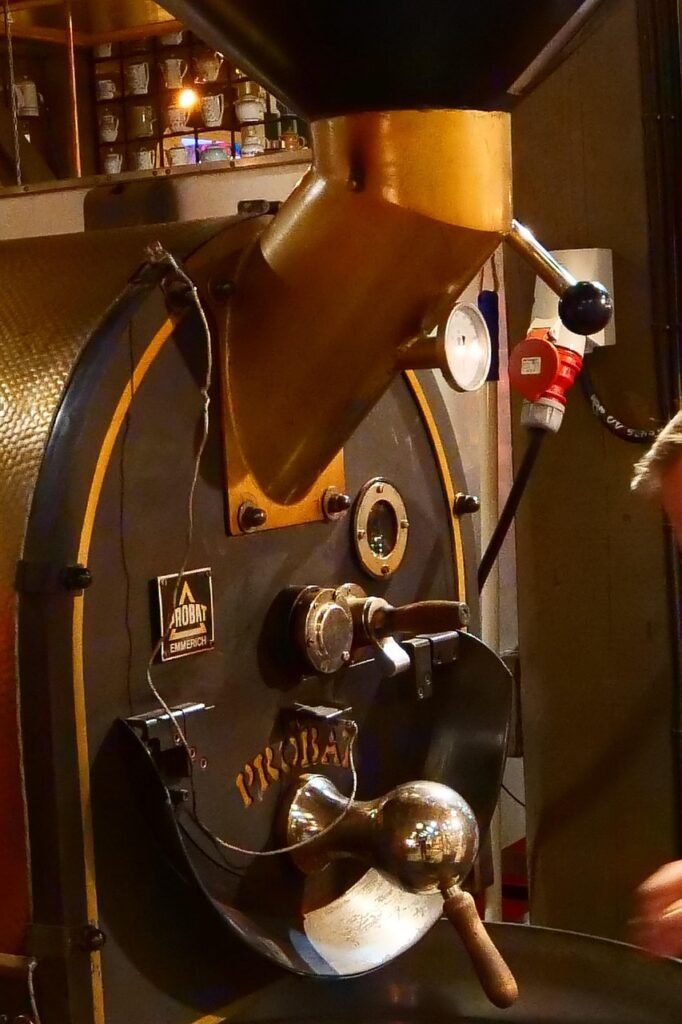Advertiser Disclosure:
Many or all of the products featured here are from our partners that compensate us for promoting their products.
The Maillard reaction is a crucial chemical process in coffee roasting, responsible for developing the complex flavors, aromas, and color of coffee beans. This reaction, which occurs between amino acids and reducing sugars under heat, plays a vital role in transforming green coffee beans into the richly flavored beans we brew into coffee.
☕What Is the Maillard Reaction?
The Maillard reaction is a browning reaction that happens when heat causes amino acids and sugars to interact, creating a wide range of flavor compounds. This reaction is similar to what occurs when baking bread, roasting meat, or toasting marshmallows.
🔥 Key Stages in the Maillard Reaction (During Coffee Roasting)
Early Stage (250–300°F / 121–149°C): Green beans begin turning yellow, releasing grassy aromas.
Mid-Stage (320–370°F / 160–188°C): Beans transition to a light brown color, and the Maillard reaction starts forming caramel, nutty, and toasty notes.
Peak Stage (First Crack at 385–400°F / 196–204°C): The reaction intensifies, leading to the formation of complex flavors and the characteristic brown color of roasted coffee.
Late Stage (Dark Roasting Beyond 430°F / 221°C): Acids break down, resulting in bold, smoky flavors with reduced acidity.
☕ How the Maillard Reaction Affects Coffee Flavor
The extent of the Maillard reaction depends on the roast level, influencing the coffee’s sweetness, acidity, and body.
🌟 Light Roast Coffee (High Acidity & Bright Flavors)
✔ Shorter roasting time → Maillard reaction is moderate.
✔ Retains bright, fruity, and floral notes.
✔ Best for specialty single-origin coffees that highlight bean characteristics.
🌗 Medium Roast Coffee (Balanced Acidity & Sweetness)
✔ Extended Maillard reaction enhances caramelization.
✔ Balanced acidity, sweetness, and body with notes of chocolate and nuts.
✔ Popular choice for espresso and drip coffee lovers.
🌑 Dark Roast Coffee (Bold & Smoky Flavors)
✔ Longer roasting time → Maillard reaction progresses into pyrolysis.
✔ Acidity diminishes, revealing rich, deep flavors with smoky undertones.
✔ Preferred by French roast and espresso enthusiasts.
☕ Maillard Reaction vs. Caramelization & Pyrolysis
While the Maillard reaction is a key driver of coffee flavor, it’s often confused with caramelization and pyrolysis:
| Process | Temperature | Effect on Coffee Flavor |
| Maillard Reaction | 250–400°F (121–204°C) | Produces nutty, caramel, and malty flavors. |
| Caramelization | 320–450°F (160–232°C) | Develops sweet, brown sugar-like notes. |
| Pyrolysis | 430°F+ (221°C+) | Leads to smoky, burnt, and bitter flavors. |
☕ Brewing & The Maillard Reaction: Maximizing Flavor
Even after roasting, you can enhance or suppress flavors from the Maillard reaction by adjusting brewing variables:
Use Medium Roasts for Balanced Flavors → Ideal for drip coffee & espresso.
Adjust Water Temperature → Higher temps (200°F / 93°C) bring out caramelized sweetness.
Choose the Right Grind Size → Finer grind for espresso (enhances body), coarser grind for French press (preserves brightness).
🔹 Want to experience the best Maillard-developed flavors?
Try specialty roasters like:
✅ Stumptown Coffee (Bright light roasts with fruity acidity).
✅ Peet’s Coffee (Smooth medium roasts with caramel undertones).
✅ Death Wish Coffee (Bold, dark roasts with a smoky finish).
📌 Final Thoughts: Why the Maillard Reaction Matters
The Maillard reaction is the foundation of coffee’s signature flavors, turning raw green beans into rich, aromatic, and flavorful coffee. Whether you love the bright acidity of a light roast, the balanced sweetness of a medium roast, or the bold smokiness of a dark roast, understanding this process can help you appreciate coffee on a deeper level.

